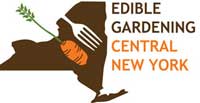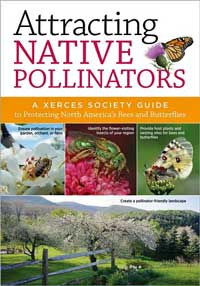| Smile, herons! You're on candid camera! |
 | | Click to connect |
| | Cornell's Lab of Ornithology has a live camera watching the Great Blue Herons nesting at the Lab. Fascinating video and audio. She's currently incubating the eggs, which should hatch at the end of April. Stay tuned! |
Canary: Coal mine;
Sugar maple: Urban health
|
 | | A dying sugar maple |
|
This post on the Native Plants & Wildlife Gardens blog by Ruth Parnall is subtitled (Or why I advocate for native street trees that die).
Because of heat, drought, compacted soil, the use of salt, air pollution and other facts of urban life, our native trees often don't survive in an urban environment. Many cities have created lists of recommended trees--many of which are not native--that can survive these challenging conditions.
So why would we plant native street trees when they're likely to die? Parnall makes the following philosophical point: "Here's what I would like to know: why do we want urban plants that do not give us fair warning that environmental conditions are becoming bad for the health of living beings? ... Is it a good idea that specialized trees can thrive in these intolerable habitats, but we might get sick? ... I would like to see trees dying when the air and water are bad...as a clue that we should do something about the conditions." Read the whole essay ... This is a good blog to follow for interesting information and different perspectives from a variety of authors! |
| Bird-friendly coffee is now available at Wild Birds Unlimited |  | Your choice of coffee makes a big difference to our migratory birds. By choosing coffee certified as "Bird-friendly" by the Smithsonian Institute for Migratory Birds, you're helping ensure that there is winter habitat for many of the birds we enjoy in summer.
Our local Wild Birds Unlimited store is located in Fayetteville Town Center.
Read more about birds and coffee ... |
| Our Habitat Garden |  |
Visit Our Habitat Garden website for information on providing habitat, earth-friendly gardening practices, plants, and various creatures here in Central New York.
|
| HGCNY on Facebook |
As as more of us participate on our Facebook page, this will become a useful resource for asking (and answering!) local HGCNYers' questions about habitat gardening. Join in what can become a very useful conversation about habitat gardening in Central New York.
|
|
Join HGCNY!
|  |
Becoming an official member of HGCNY is easy: just join Wild Ones! When you're a Wild Ones member, you're automatically an official member of HGCNY. |
| Our Edible Garden |  | | Visit OurEdibleGarden.org to see an example of a Central New York edible garden, the perfect companion to your habitat garden. |
| Interested in Edible Gardening? | 
|
If you'd like to get information on Edible Gardening CNY, just email John to find out about edible gardening tours and programs. |
|
Greetings!
April 29 Program: Bats 
We're pleased to have Jim D'Angelo, director of Sterling Nature Center, return to wrap up our regular season of programs. One of the first programs Jim presented to HGCNY many years ago was about bats. Since then, a mysterious fungus (White-nose Syndrome) has affected our bat population. Bats perform many valuable services, but myths abound about this fascinating mammal. Learn the facts about bats, the challenges they're facing and how you can welcome them into your habitat garden.
It's especially appropriate to talk about bats this year since it's the U.N. Year of the Bat with the motto "Save Bats to Save the Planet."
WHEN: Sunday, April 29 at 2:00 PM
WHERE: Liverpool Public Library (Directions)
Free and open to the public.
Come and bring a friend!
 | | Catbird taking a sunbath |
Want to learn more about habitat gardening?
I'll be giving a series of five presentations at Liverpool Library Tuesday nights from 6:30 to 8:00 pm. Free and open to the public.
April 17: Habitat gardening for life
April 24: Monarchs and creating a butterfly-friendly yard
March 1: Our future flies on the wings of pollinators
March 8: Creating a bird-friendly yard
March 15: Designing an earth-friendly yard
~ Janet Allen
|
|
|
Native Plant Shopping Guide
 | | Click to download |
"But where do I find native plants?" is one of the most common questions people ask us. To help you find native plants in CNY, we've compiled a list of plants offered by several local nurseries. We're surprised to see that there are many more species offered than we suspected, which is very good news. REMEMBER, though, that supplies can run out, so if you're looking for a particular plant, please call the nursery before setting out on your shopping trip! This guide is available online as a free .pdf download, and we'll have hard copies available at our April meeting ($2 for non-members; free for Wild Ones members). NOTE: Although we welcome everyone to our meetings, only people who have paid Wild Ones dues are official members of HGCNY. (Info on joining Wild Ones is in the left hand column.)
|
|
Monarch population status
 | | Monarch laying an egg on swamp milkweed |
From the Monarch Watch March 19 blog by Chip Taylor, director of Monarch Watch:
"The total for all colonies, as reported to the press, is 2.89 hectares...the 4th lowest total for the monarch colonies recorded since the winter of 1994-1995. Further, this population represents a continuation of a trend - the 8th consecutive population below the long term average."
He points out that the overwintering monarch populations has declined significantly since 2003. A prominent reason for this decline is the use of herbicide-tolerant crops (for example, "Roundup-ready crops"). Previously, milkweed grew among the crops, but no more. This alone represents a loss of an estimated 100 million acres of habitat or more.
Additional factors include the use of herbicides and mowing in other areas such as roadsides, fewer conservation acres set aside, and the increasing conversion of pastures and grasslands to produce corn and soybeans for biofuels.
Taylor says, "Monarch butterfly populations are declining due to loss of habitat. To assure a future for monarchs, conservation and restoration of milkweeds needs to become a national priority."
As of today, there are 5,299 Monarch Waystations registered, but at least 10,000 are needed to compensate for lost habitat.
Create a Monarch Waystation this year and help assure a future for monarchs!
And let our cities and towns know that milkweeds are not "weeds," and we want them growing on public lands!
NOTE: The program at Liverpool Library (described in the greetings section above) on April 24 at 6:30 pm will show you how. Our Habitat Garden also has information on Monarch Waystations, milkweeds, and monarchs. |
 | |
Excellent guide to promoting pollinators in your own yard and elsewhere (Available at the library, at Xerces.org, or at bookstores such as Amazon.com.)
|
Our fall apples depend on pollinators now
We rely on pollinators for one of every three bites of food we eat. But which pollinators?
Researchers, such as Bryan Danforth of Cornell, are studying the relative contributions of honey bees and native bees in pollinating our NYS apples. They're finding that our native insects are very effective pollinators--so effective, in fact, that we may not need to rent non-native honeybees to do the job.
As reported in the Mar/Apr 2012 issue of Cornell Alumni Magazine: "Already, the team has found that the smaller farms of the Finger Lakes, surrounded by forests and fields that provide alternative forage and habitat for insect populations, have far higher numbers of bee species active in their orchards than do the much larger farms on the south shore of Lake Ontario, the state's primary apple-growing region." Read more ....
Our own yards can promote biodiversity and healthy populations of native bees and insects. Just plant a variety of native plants and forgo the use of pesticides. |
 | |
Click on the sign to go to a page of our yard signs to download
|
Pesticides are "'cides"
Every month we learn more and more about the dangers of many of the toxic chemicals routinely used. Some of these chemicals are actually banned in other countries!
Here's just a small sampling of some recent findings:
Roundup linked to animal shape changes - Uni. of Pittsburgh researchers found that the weed killer Roundup causes two species of amphibians to change their shape by interfering with the hormones of tadpoles and potentially many other animals.Common pesticides linked to lower birth weight - Pregnant women exposed to organophosphate (OP) pesticides--a widely used class of agricultural pesticides that includes chlorpyrifos, diazinon, and malathion--may affect both length of pregnancy and birth weight. Although some of these are banned for household use, they're still used in agriculture, golf courses, and for mosquito-spraying. Pesticides linked to bee health - The journal Science published two new studies relating neonicotinoid pesticide exposure to bee health. One found that these pesticides interfere with honey bee brains, affecting their ability to navigate. The other found that pesticides prevent bumble bees from collecting enough food to produce new queens. |
|
|
|
|